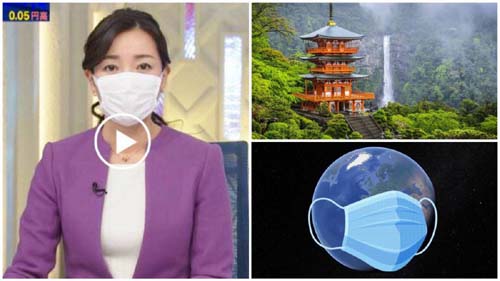
Use of masks by Japanese news anchors sparks debate among public and industry
Tokyo: The use of masks by television personalities and news anchors on camera is sparking a debate among the public and within the entertainment industry in Japan after broadcasters on a major network began wearing them during a program.
TV Tokyo Corp. began having its anchors wear masks from January 18. After anchor Mariko Oe asked viewers for feedback, the network received over 1,000 comments, of which approximately 80% saw the move in a favorable light.
Some of those who disliked the use of masks on camera remarked it was difficult to make out the anchor’s facial expressions. The network is planning to start using subtitles after viewers with hearing difficulties said the masks meant they were unable to lip-read.
The use of masks on camera has been questioned from various voices from across the field. During a recent news conference, Satoru Masagaki, executive director of broadcasting at NHK, denied they were needed, saying acrylic panels were installed in the studios and that reporters “put significant distance between one another.”
“It irritates me how the public is wearing masks and holding its breath to prevent the spread of the virus, while it seems as if everything is normal on TV,” said a 44-year-old woman in Tokyo. “I’m often working from home, but I’ve recently stopped watching TV (because of it.)”
Some television programs have also garnered criticism on social media for their use of clear mouth shields, which are said to have limited effectiveness in preventing the spread of infections.
The discrepancy between talent agencies and broadcasters has been growing, with one television director saying it is unfeasible to ask those appearing on camera to “hide their face with a mask” because “they sell their looks, so to speak.”
An employee of a talent agency said it is “difficult” to refuse the use of mouth shields provided by the networks.
The use of masks on camera “is likely an effective method to convey a sense of crisis,” said Soichiro Matsutani, a sociology expert.
But the adjunct lecturer at Tokyo’s Musashi University added that putting distance between one another through the use of acrylic panels and participating remotely should be enough.
“We need to be logical and rational, but I’m concerned about the situation in Japan where some people avoid working remotely” because they are prioritizing personal interactions, Matsutani said.
“It’s important to devise a way in which (television personalities) can work remotely, such as by participating from a separate room,” he said.
